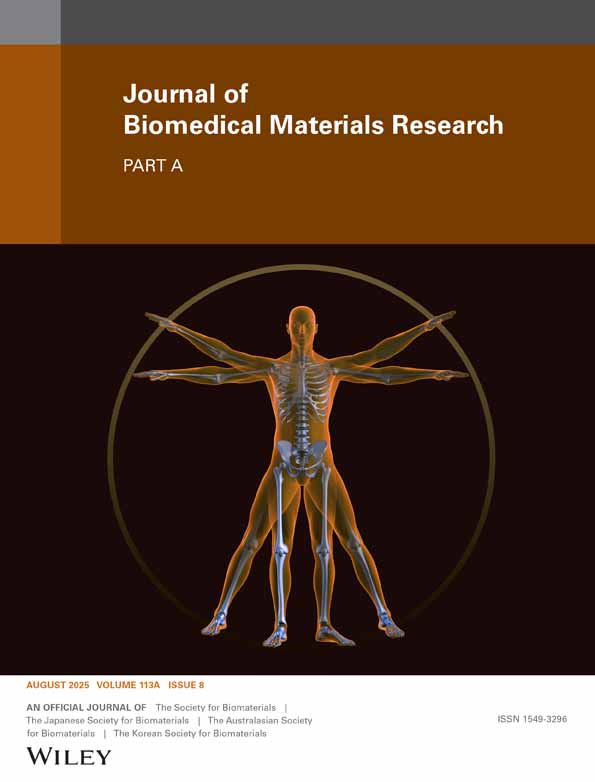Controlled release of tethered molecules via engineered hydrogel degradation: Model development and validation
Abstract
A statistical-co-kinetic model has been developed to predict effects of hydrolytic or enzymatic degradation on the macroscopic properties of hydrogels formed through Michael-type addition reactions. Important parameters accounted for by the theoretical calculations are bond cleavage kinetics, microstructural network characteristics such as macromer functionality and crosslinking efficiency, and detailed analysis of degradation products. Previous work indicated the validity of this modeling approach for predicting swelling behavior of hydrolytically degradable gels during early stages of degradation and the quantitative dependence of gel degradation on kinetic and structural parameters. The theoretical methodology is extended in the current work to predict release of covalently bound proteins from the network via labile bonds. Release studies of a network-bound fluoroscopic probe allow validation of model degradation parameters and indicate that macromer functionalization and network crosslinking efficiency can be appropriately tailored to achieve desired swelling profiles and protein release rates over the lifetime of the degradable gel. The effects of these network parameters on the timing of gel dissolution and the protein release that occurs during this phase of degradation are also identified, highlighting the utility of the developed model as a comprehensive tool for optimizing degradable hydrogels as matrices for drug delivery and tissue regeneration. © 2005 Wiley Periodicals, Inc. J Biomed Mater Res, 2005




